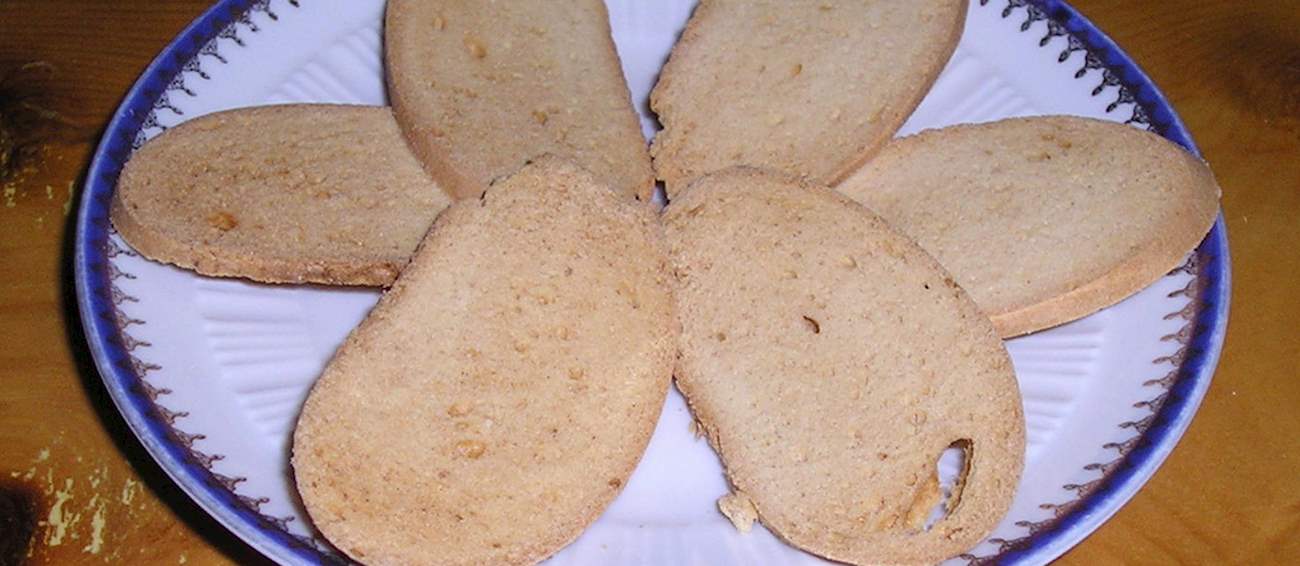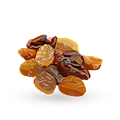These rustic cornmeal cookies get their name from the word zálo, which means "yellow" in the Venetian dialect. They are typically flavored with lemon zest, studded with rum-soaked raisins, and traditionally made without sugar, while a splash of grappa if often added to the dough.
Zaletti are excellent for dipping in milk, tea, or coffee, which makes them a popular breakfast choice in Venice, though they are also often enjoyed as an after-meal snack, paired with a glass of dessert wine like Vin Santo.
Invented in the 18th century by a Venetian baker, baicoli are small, slightly sweet biscotti consisting of flour, butter, sugar, yeast, egg whites, milk, and a pinch of salt. The name baicoli, meaning sea bass, refers to the shape of these cookies, which is similar to that of a small sea bass, elongated and slightly flattened.
Due to their prolonged shelf life, baicoli were also a staple on numerous boats and war ships. Today, they are most often served with coffee and a light, foamy dessert known as zabaglione.
MAIN INGREDIENTS
Sbreghette are traditional Venetian almond biscuits that are quite firm and slightly sweet, made from a simple dough that includes wheat flour, eggs, butter, and whole almonds. They are baked twice to achieve a hard, crunchy texture, making them perfect for dipping in sweet wines, especially dessert wines like Vin Santo or fortified white wines.
Sbreghette are enjoyed as an end-of-meal treat and are part of the long-standing culinary tradition of Venice, where many local pastries and biscuits are crafted with simplicity, using few ingredients but creating a distinct and satisfying flavor.
MAIN INGREDIENTS
Baci di Romeo, or "Romeo's Kisses," are traditional Veronese cookies that complement Baci di Giulietta cookies. Named after Shakespeare's Romeo, these cookies consist of two halves made with a blend of hazelnuts, almonds, egg whites, sugar, and cocoa, sandwiched with white chocolate, creating a contrasting yet harmonious counterpart to the "white" Juliet's Kisses that have a dark chocolate filling.
They are a popular delicacy in Verona, found in many pastry shops. They are cherished for their delicious taste and romantic symbolism, making them a delightful treat for both locals and tourists.
MAIN INGREDIENTS
Baci di Giulietta, also known as "Juliet's Kisses," are traditional Italian cookies originating from Verona, Italy. They are named after the famous character Juliet from Shakespeare's "Romeo and Juliet," symbolizing the romantic essence of the city.
These delightful cookies consist of two pale almond and hazelnut halves sandwiched together with a layer of dark chocolate. The cookies have a delicate, crumbly texture and a rich, nutty flavor that pairs well with the chocolate filling. Traditionally, men gift their beloved baci di Giulietta, while women offer "Romeo's Kisses" in return.
Pevarini are ancient, peppery cookies hailing from Venice, where they have been prepared since the 15th century. Once very popular, nowadays they are pretty hard to find. Originally, they were made with pepper, molasses, lard, and flour, but honey and sugar can be used instead of molasses, while the lard is often substituted with butter.
Additional spices such as cinnamon, nutmeg, ginger, or cloves may be used, but pepper remains the most important ingredient. Although it might seem unusual, the use of pepper in ancient, traditional sweets is not that rare – it might have something to do with the medieval authority, St Hildegard, who claimed that pepper is a great cure for melancholy.
TasteAtlas food rankings are based on the ratings of the TasteAtlas audience, with a series of mechanisms that recognize real users and that ignore bot, nationalist or local patriotic ratings, and give additional value to the ratings of users that the system recognizes as knowledgeable. TasteAtlas Rankings should not be seen as the final global conclusion about food. Their purpose is to promote excellent local foods, instill pride in traditional dishes, and arouse curiosity about dishes you haven’t tried.









